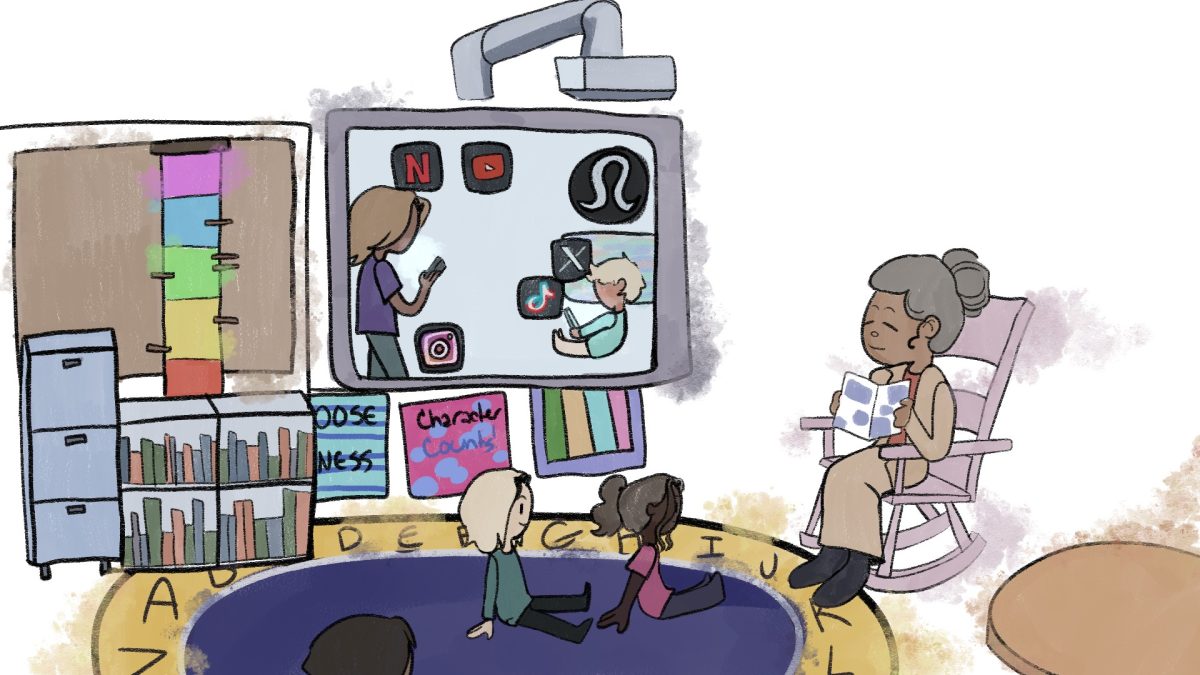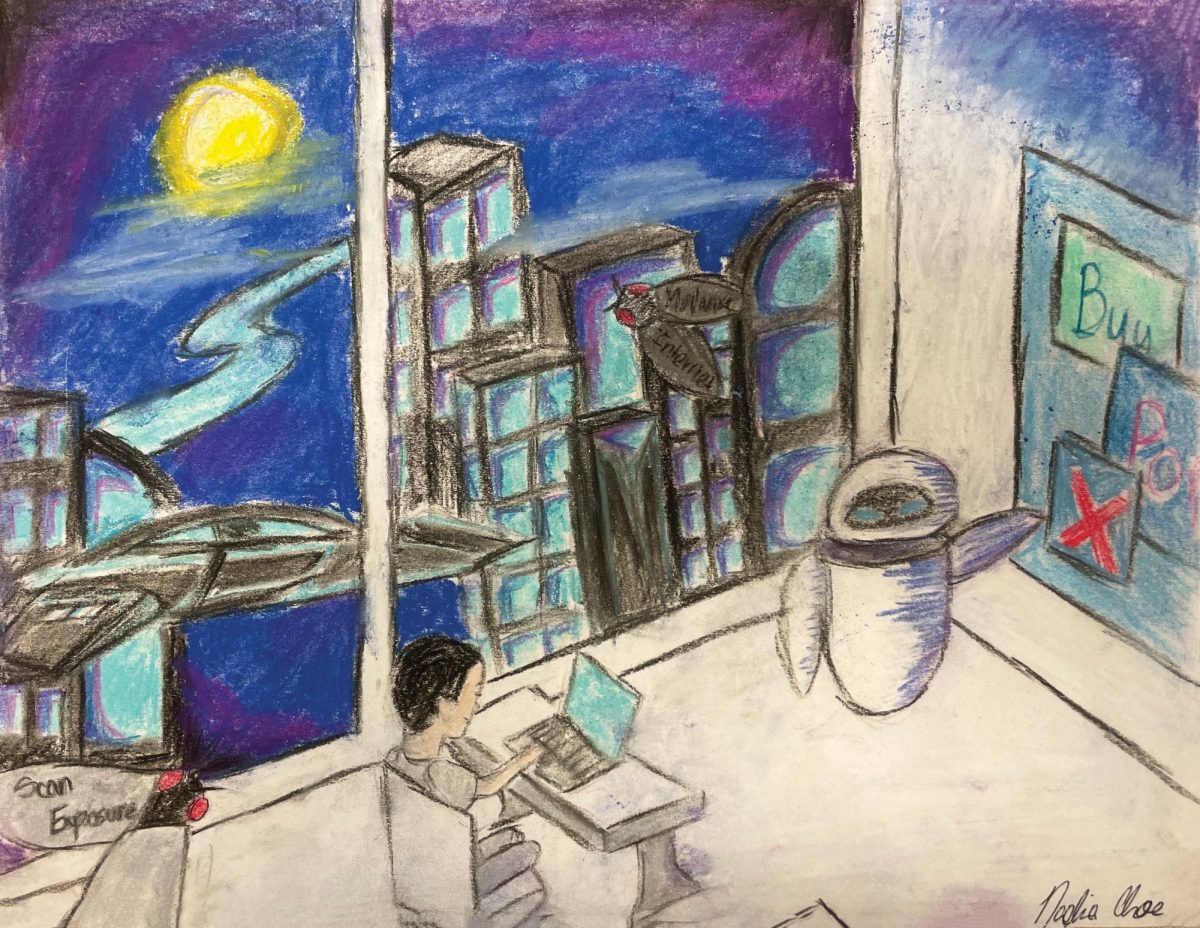It is nothing new for children and teenagers to look up to older peers or favorite celebrities and mirror their behaviors, fashions, and interests as they navigate maturing into their own person.
For example, how many of us thought that our camp counselors or older cousins were so cool and how we wanted to be exactly like them?
But recently, due to increased access to the internet and social media, children and adolescents are exposed to an infinite multitude of celebrities and influencers promoting products, clothes and behaviors that do not correlate with the maturity of their young fans.
Instead of being exposed to these more mature trends in fewer amounts, generally within a person’s immediate community, children and adolescents are macrodosing videos on “must-have” skincare products to reduce aging and $1,000 Shein hauls on TikTok.
While there has always been a pressure to conform to trends throughout each generation, a unique phenomenon seems to be happening with today’s younger generations; not only is there an increasingly heavy pressure to conform to trends due to the reaffirming nature of social media that tells us that this is what you need to be doing, but the age range of trends seem to be all-encompassing, not just pertaining to teenagers or adults.
For example, it is becoming much more common for pre-adolescents to accumulate hundreds of dollars worth of Drunk Elephant moisturizers, Bubble cleansers, Glow Recipe toners, Laneige hydrating masks and other trending skin care products to use on their pre-pubescent skin; all with the intention to prevent aging and wrinkles at 10 years old.
Or middle schoolers spending more money on Lululemon Scuba hoodies and Define jackets paired with some high-waisted leggings to complete an outfit costing at least $220.
Each generation of course has experienced wanting to wear their mom’s makeup and high heels as a kid as a way to dress up as an adult and embody the sophistication and fanciness not expected as children.
Yet, many of today’s children and pre-adolescents don’t view these more adult behaviors and styles as “dress-up” but instead have incorporated it into their everyday lives.
The pressure to be involved in these trends stems from the age children receive a phone/device to access the internet. The average age to get their first phone was 14 in 2015, according to NPRThe average age to receive a phone nowadays is 11 years old, according to Stanford Medicine.
The age a child receives their first device determines when they are introduced to the world and lose their “shell” of protection. The younger a child gets a phone, the quicker they are putting their innocence in jeopardy.
It’s not necessarily the childrens’ faults; their behaviors are a byproduct and reflection of being the first generation to have grown up alongside endless Instagram feeds and weekly trends.
For upperclassmen, many of us remember our childhoods defined by sparkly Justice clothing, light-up Sketchers, afternoons after school spent playing outside and the extent of our digital footprint concentrated on Club Penguin.
Looking at many of the children experiencing childhood right now, it’s scary to think of them losing that playful, unconscious innocence to memories made over their iPhone screens.
The amount of technology being consumed is also physically altering kids’ brains. According to CBS News, the average attention span of a kid in 2003 was two-and-a-half minutes, while the average attention span of a child today is just 47 seconds. Screens are programming kids to take information at quick rates, but they also lessen their ability to focus.
Screens are also having a dramatic effect on mental health as well;Over 40% of kids today have suicidal or depressive thoughts, largely coming from social media and technology, according to the Centers for Disease Control and Prevention (CDC) Youth Risk Behavior Surveillance System.
With such an abundance of technology in the hands of kids, it has taken so many of the fun things about growing up away from them. Creating memories with friends outside, enjoying nature and so much more.
The younger kids start to “mature” and do what older kids/adults do, the less time they have to spend their childhood doing the small things.
Looking back on childhood can be very nostalgic and can create happy memories. If kids don’t live out their childhood to its fullest extent, what will they have to look back on?
So what can we do to create a childhood we will want to think about over the years?
Just enjoy every moment.
We look at the younger generation and judge how they grow up, but Gen-Z is the exact same. We grew up on technology and we may even be wasting our childhood.
We should all take a moment to step back and look around.
Childhood is something that happens once in a lifetime and once it is over, some of the feelings you get can never come back.
Instead of playing video games for a couple hours or studying for that AP test that has you stressed out, try going outside and enjoying the weather or making plans with your friends.
The friends and people we meet in our childhood can stick with us for a lifetime.
Whether they are a partner, friend or just an acquaintance, it is always nice to have somebody near you that can bring you back to childhood.
Go out and find those people that make you feel like a kid, have fun and do those things that make you feel free and forget about all the stressors of life.
With college and adulthood creeping closer every day, there is no better time than now to enjoy what is left of childhood.



